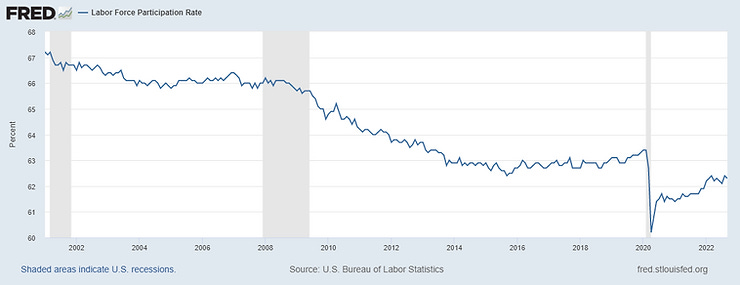Lost in the cacophony about the Great Inflation is a very simple fact: we talk a lot about inflation, but the reason why inflation is important is not that it results in a transfer of wealth from creditors to debtors, but rather that it makes the things that are the largest share of wallet more expensive for the average consumer. We strip out Food and Energy from inflation measures because these are famously volatile and transitory; you don't strip out Shelter. And when Shelter increases in price, it's highly impactful to renters, since they will likely pay that higher price every month for twelve months. Higher rents also affect Owner's Equivalent of Rent of Residences, since there is an increase in the opportunity cost of using one's asset to live in. The largest single line item in the American family budget goes for Shelter. In 2020, the average American household spent 34.9% of income on Housing, with 20.5% of that going just to Shelter alone. When the cost of Shelter increases, the average household feels the pinch.
The increasing unaffordability of Shelter had previously been solely an urban phenomenon, where the cost to add new housing stock has been prohibitively high. Cities in the Sandbelt, with their lack of geographical constraints, allowed for the rapid addition of new housing stock to accommodate new demand. But with the advent of remote work, and the concomitant shift of the American population from densely populated urban areas to less-densely populated suburban, exurban and rural communities, that has changed. Larger, big-city incomes chased fewer existing and new houses in those areas. COVID-19 and Remote Work refugees brought their high rents with them. Combined with a large increase in building material costs, a scarcity of skilled labor, and high mortgage rates, builders are reluctant to ameliorate the affordability crisis. Expect this supply-demand mismatch to persist and to continue contributing to inflation for some time.
Where Have All the Workers Gone?
We've written before about the decline in the US Labor Force Participation Rate. It has been in decline for some time but really plumbed new depths in the wake of the Global Pandemic.
Population growth is essential for productivity growth because the more residents you have, the more workers you have. If the birth rate falls below the replacement rate, then in order to keep growing, a country has to make technological changes, accept migrants, or both. In high-technology societies, it is difficult to add additional productive capacity through the invention or incorporation of new technologies. By contrast, most recent technological advances in the developed world have yet to show up in productivity statistics, perhaps because they have improved leisure rather than productivity.
Unfortunately for those who desire economic growth in the United States, the other source of productivity growth, immigration, also has been failing. According to known liberal information source the George W. Bush Presidential Center, in 2019 immigrants accounted for 13.5% of the population, but 17% of the American labor force. Immigrants in America are more likely to work than is the native-born population, so by adding immigrants to the population, you increase the labor force participation rate. They comprise about a quarter of the construction labor force, a third of lodging and hospitality, and a quarter of health care workers. Curious--it seems that these same industries are experiencing labor shortages that are in part driving wage growth in the United States.
People are a good in and of themselves. Immigrants need not impart economic utility to have inherent dignity and value. It seems to goodstead that one of the fundamental and irreducible freedoms that cannot be alienated is the right to sell one's labor to whomever one chooses. We wonder where the vociferous voice of the Libertarian is when it comes to this most basic free market principle, and why so few will state emphatically that the state should not seek to intermediate this economic transaction. Regardless of moral and philosophical justifications, immigration in this case is a practical good, and the United States' and United Kingdom's recent struggles with labor demand and its concomitant wage inflation provide an existence proof of this fact.






